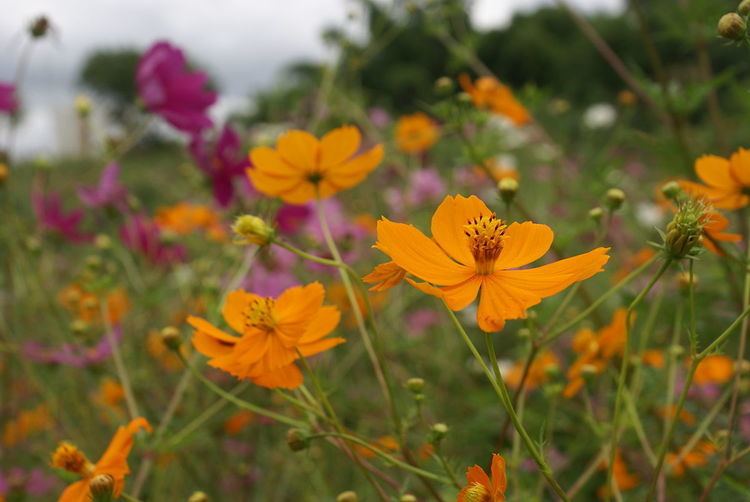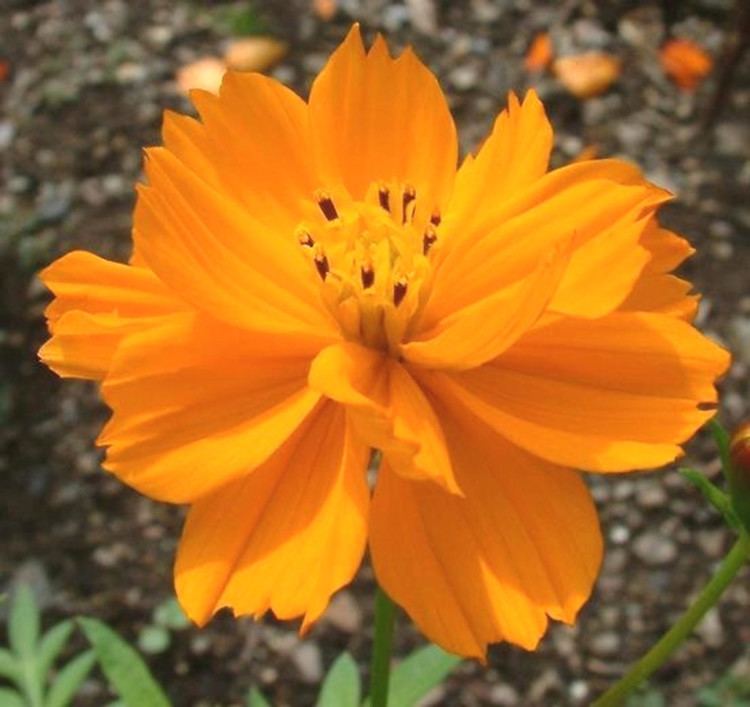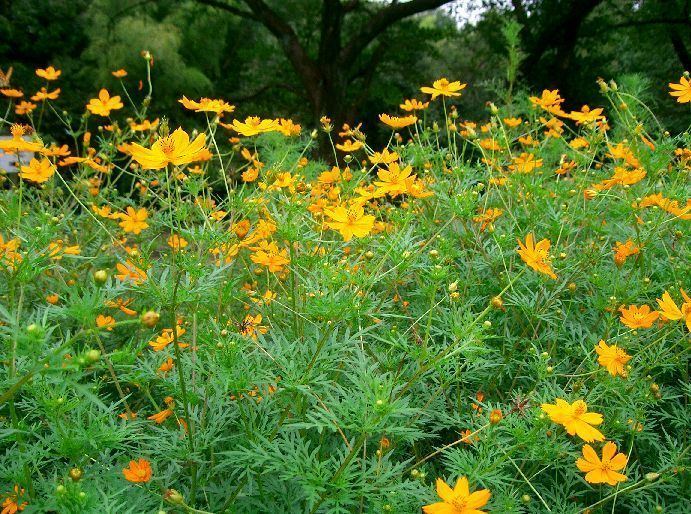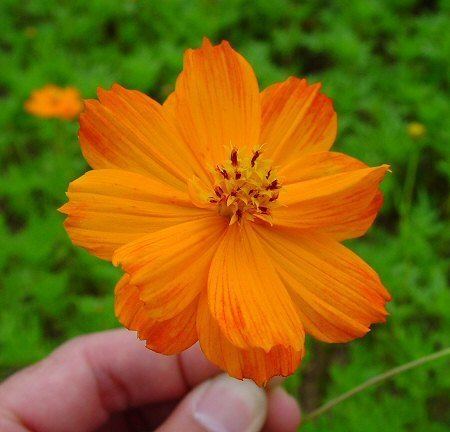Higher classification Cosmos | Scientific name Cosmos sulphureus Rank Species | |
 | ||
Similar Cosmos, Cosmos bipinnatus, Daisy family, Coreopsis lanceolata, Cosmos atrosanguineus | ||
Cosmos sulphureus flowers yellow cosmos sulfur cosmos
Cosmos sulphureus is also known as sulfur cosmos and yellow cosmos. It is native to Mexico, Central America, and northern South America, and naturalized in other parts of North and South America as well as in Europe, Asia, and Australia.
Contents
- Cosmos sulphureus flowers yellow cosmos sulfur cosmos
- How to collect cosmos sulphureus seeds
- References

This species of Cosmos is considered a half-hardy annual, although plants may re-appear via self-sowing for several years. Its foliage is opposite and pinnately divided. The plant height varies from 1–7 feet (30–210 cm). The original and its cultivars appear in shades of yellow, orange, and red. It is especially popular in Korea and Japan, where it is often seen in mass plantings along roadsides, following an initiative pursued by the Korean-Japanese botanist Woo Jang-choon.

This plant was declared invasive by the United States Southeast Exotic Pest Plant Council in 1996.
Some of the varieties of Cosmos sulphureus in cultivation today include:

Growth characteristics of this plant include

The flowers of all Cosmos attract birds and butterflies, including the monarch butterfly. Cosmos sulphureus is featured in the 1997 Japanese film Remembering the Cosmos Flower.

How to collect cosmos sulphureus seeds

